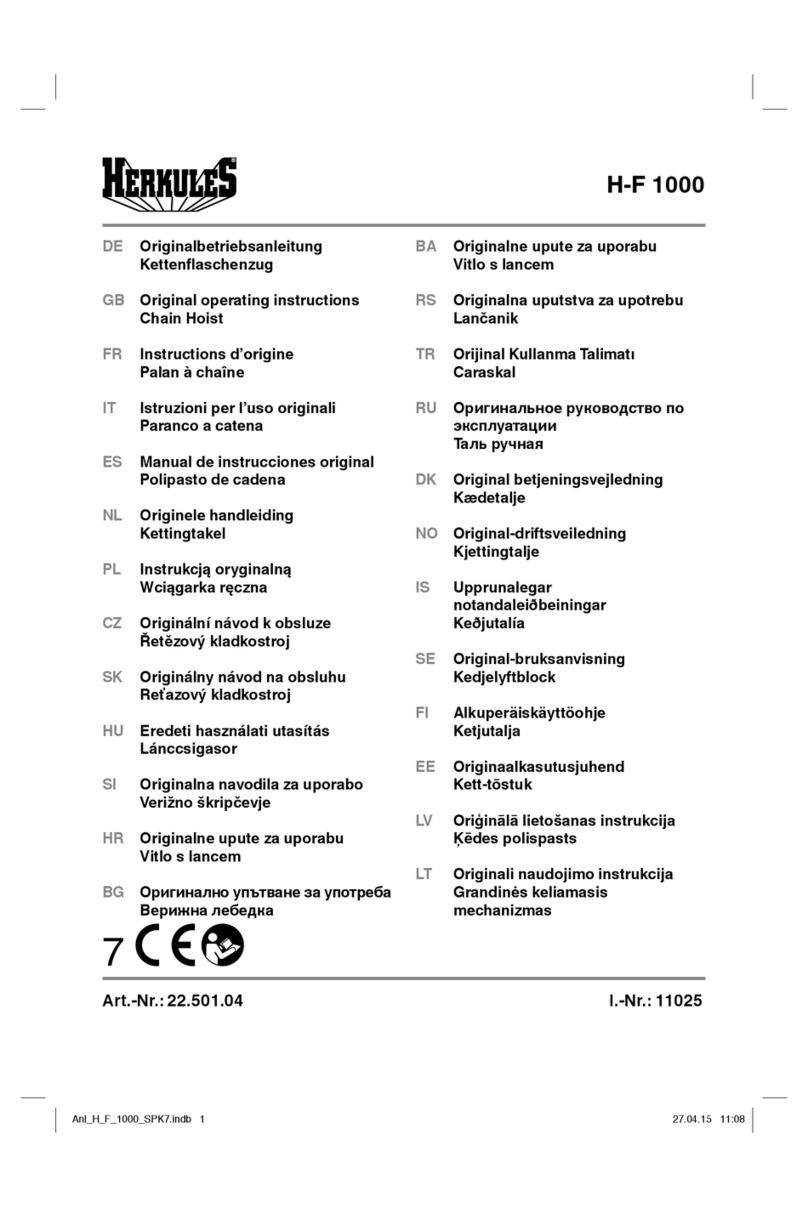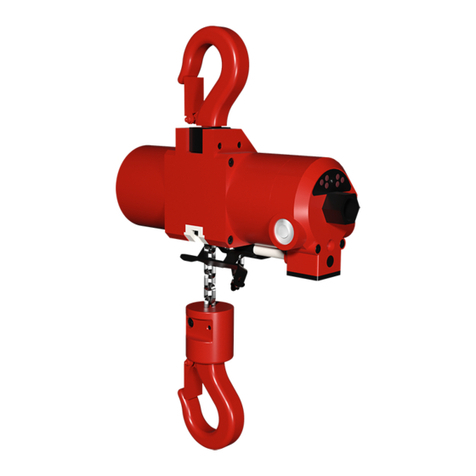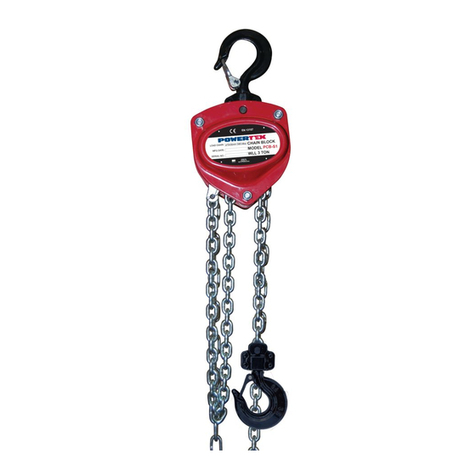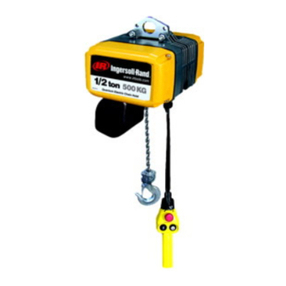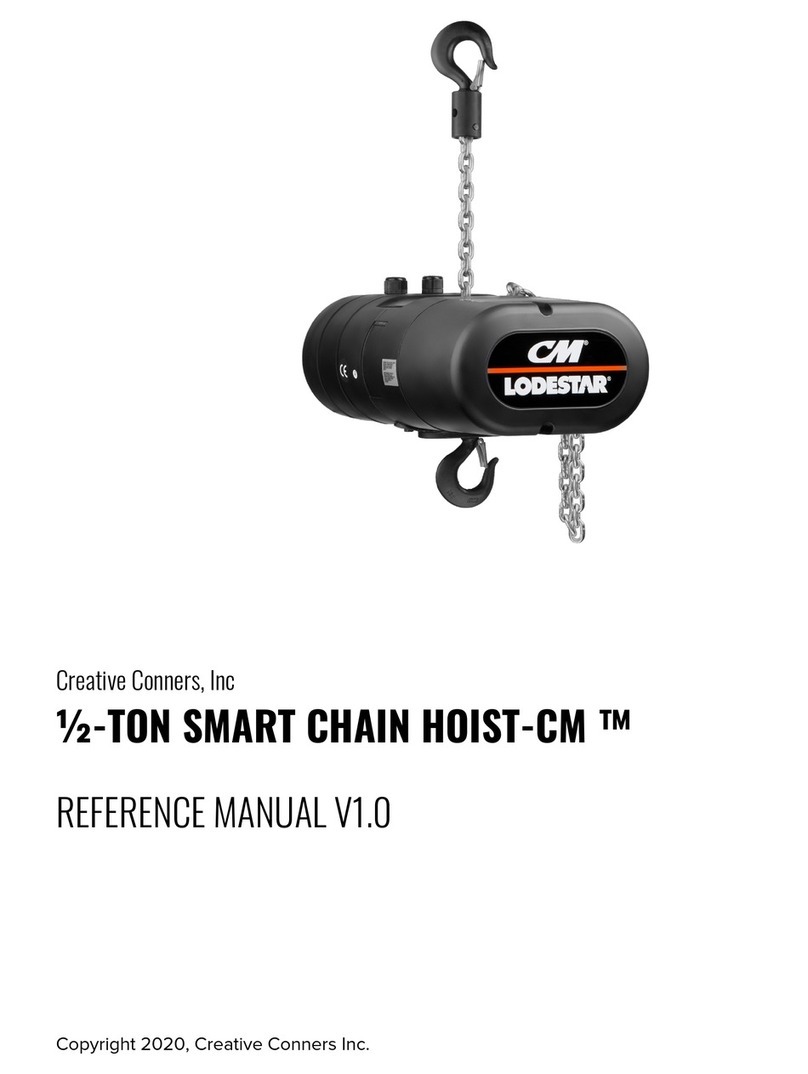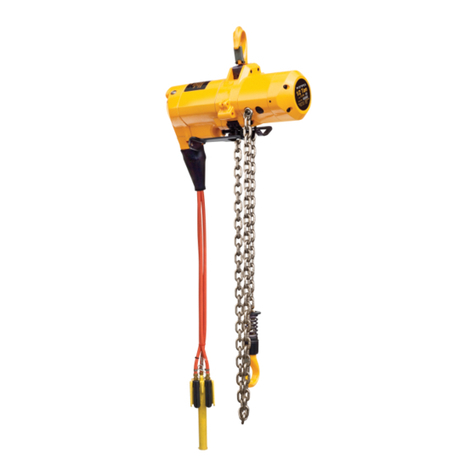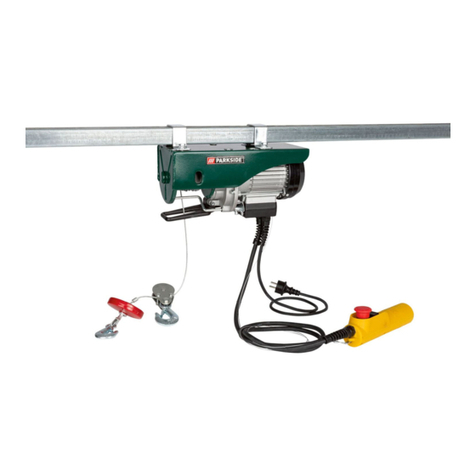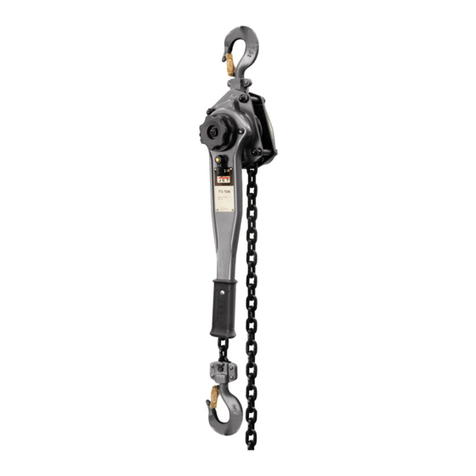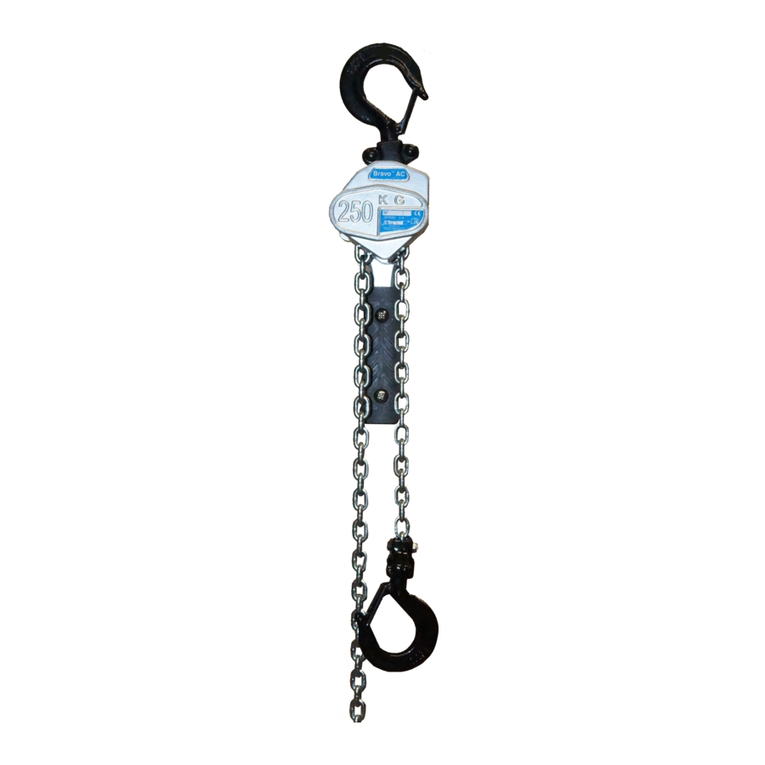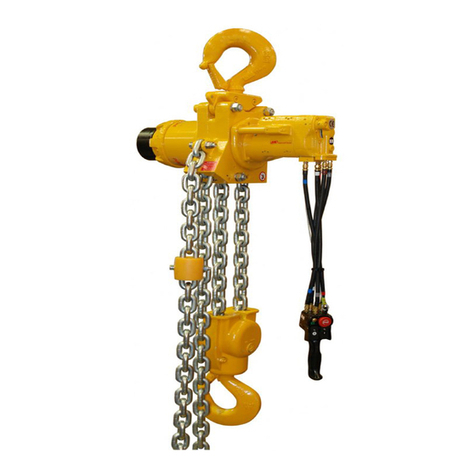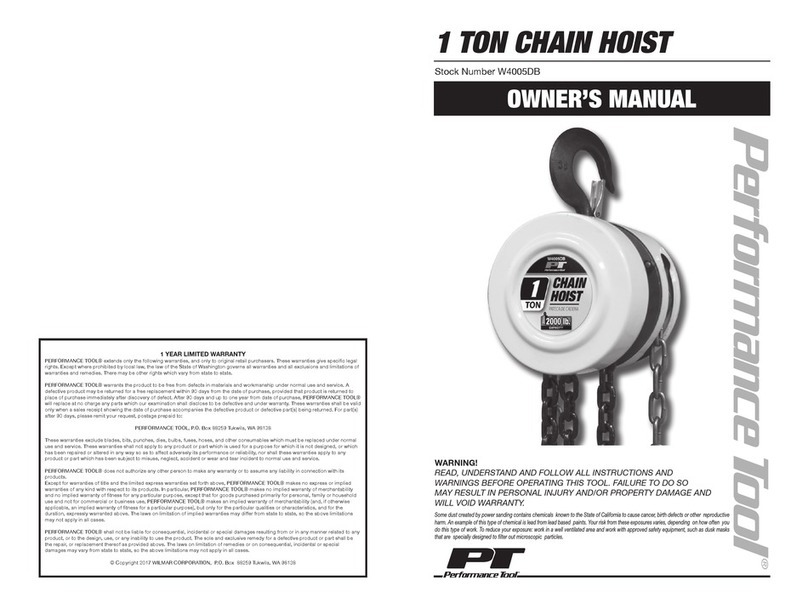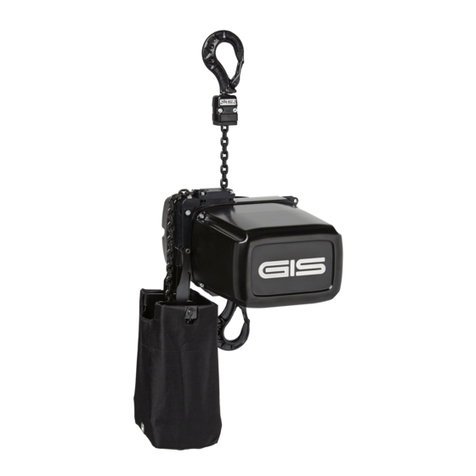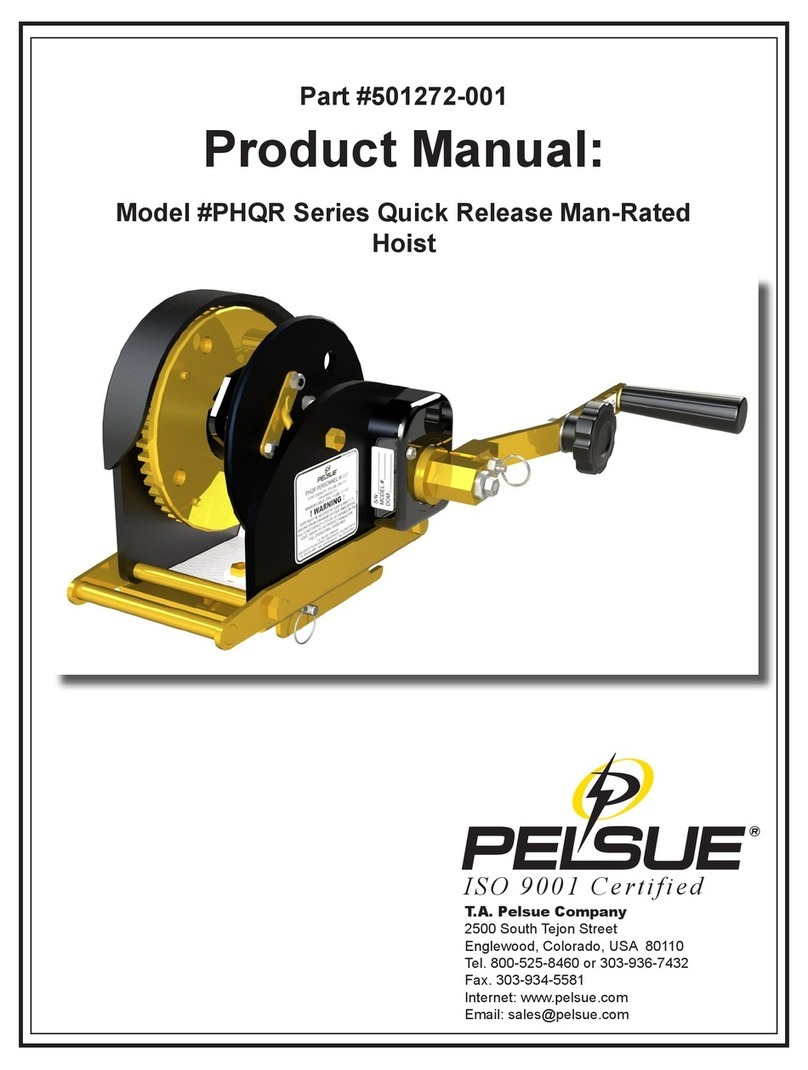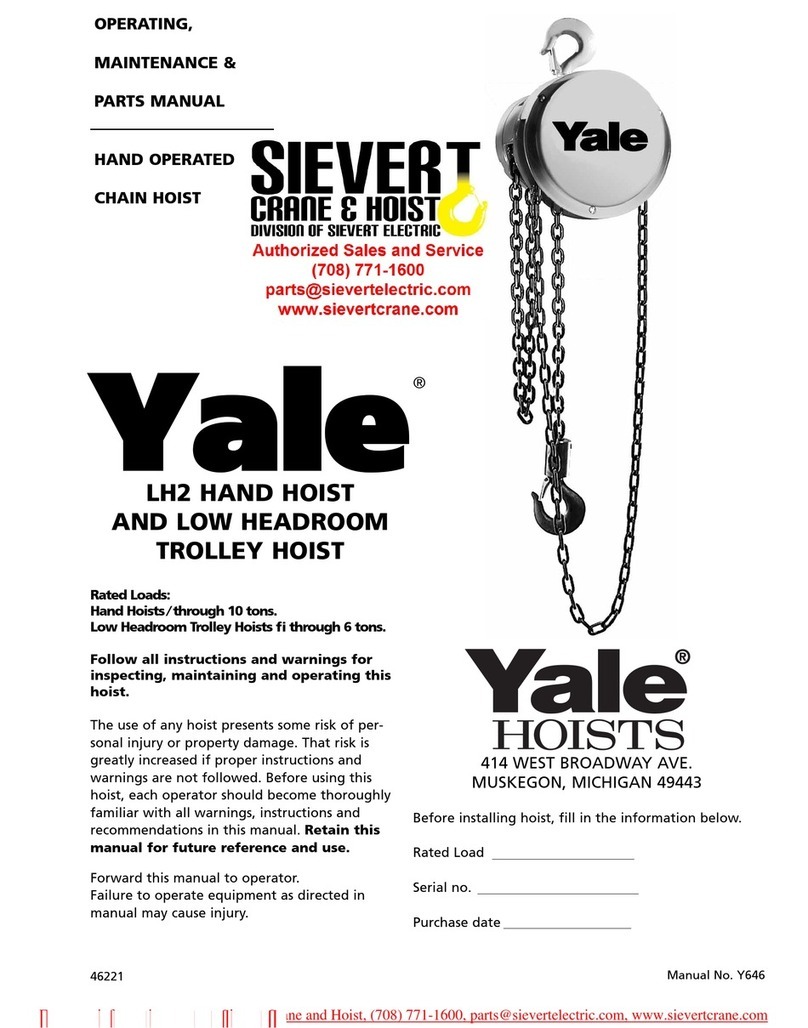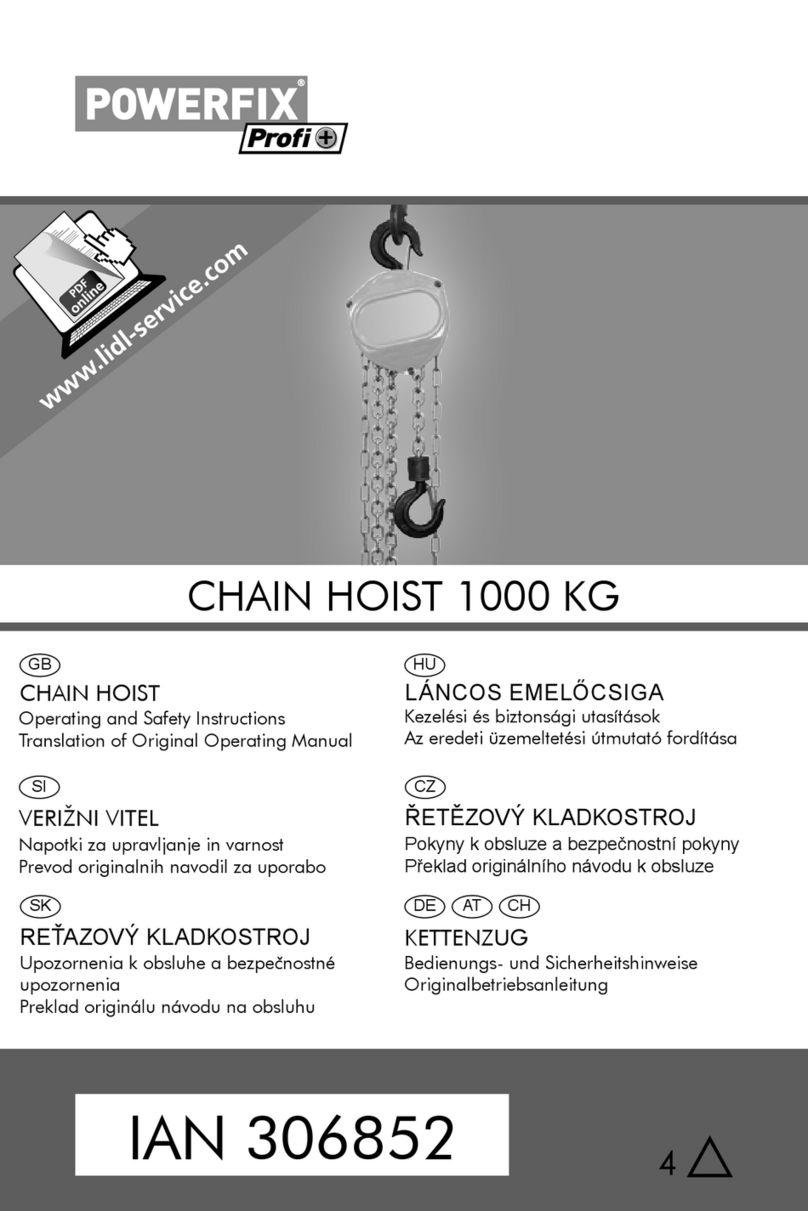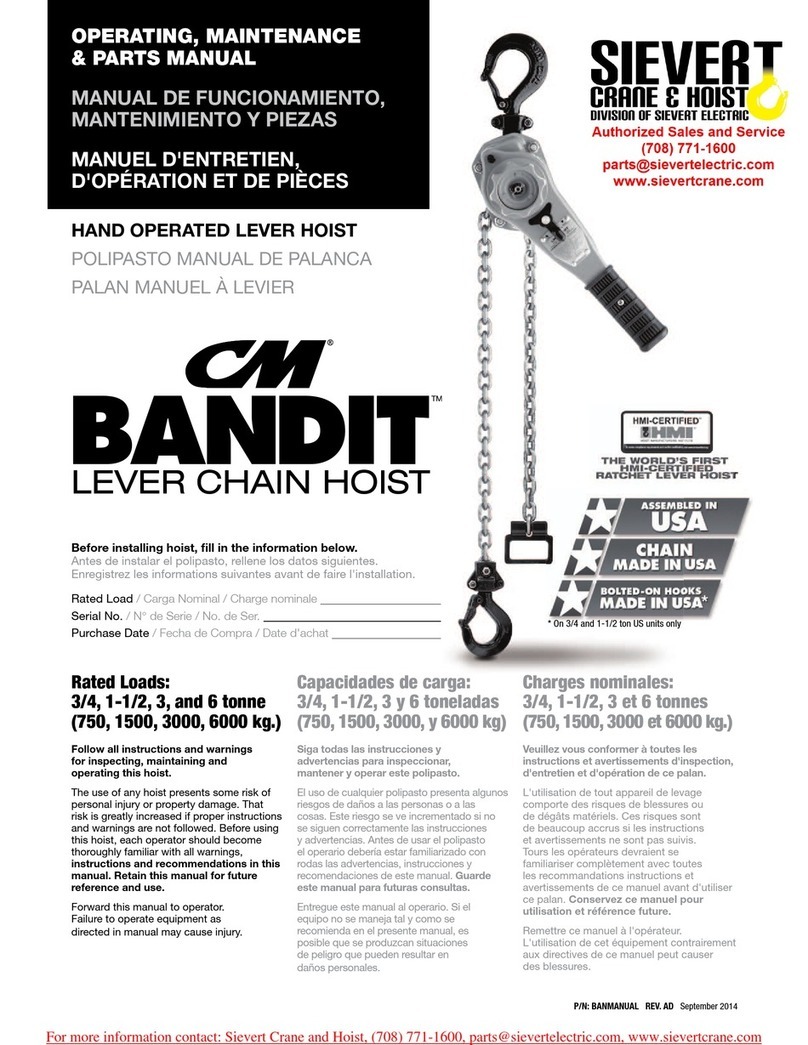
INDUSTRIAL PRODUCTS
Security House, Wigston, Leicester, England.
To ensure the chain hoist remains in a safe working order, it should be subjected to regular
inspections by a competent person. Inspections should be annual unless the chain hoist is
subjected to adverse working conditions, in which case the inspection should be more regular.
1. After operation, clean the chain hoist and keep it in a dry place to prevent rust and corrosion.
2. Clean the chain block annually by purging the parts in kerosene and apply grease to them.
3. “O” marks on the two disk gears should be aligned.
4. Firstly, place the rollers of both the left and right bearing on to the inner race of the bearings on the
chain sprocket shaft journal. Then put them on to the outer race of the bearings on the side plates.
5. While assembling the brake mechanism, care should be taken when bringing together the slanting
teeth of the ratchet disc and the pawl. Make sure that the pawl responds to the movement of the
spring. Then turn the hand wheel clockwise after screwing in onto the driving shaft so that it
presses on to the disc and the plates on the brake seat. When turning the hand wheel
counterclockwise, there should be a space between the disc and the plates.
6. The stay and the right side plate are in transition and care should be taken not to dismantle them.
7. After cleaning and repair, the chain hoist should be tested with and without a load.
8. Keep the friction surfaces of the brake mechanism clean whilst lubricating or operating the chain
block. Inspect the brake mechanism frequently so as to avoid brake failure.
9. For the convenience of maintenance and dismantling, one of the links of the hand chain is open.
SAFETY & OPERATING INSTRUCTIONS
SPECIFICATIONS
Order Code MTL-941- 4010K 4020K 4030K 4040K 4050K
Model HCH05 HCH1 HCH2 HCH3 HCH5
Capacity (t) 0.5 1 2 3 5
Standard Lift (m) 2.5 2.5 2.5 3 3
Running Test Load 0.75 1.5 3 4.5 6.25
Headroom (Drawn Close-up) Hmin (mm) 271 400 420 620 704
Effort required to lift max load (N) 225 309 314 343 383
No. of columns of load chain 1 1 2 2 2
Load chain dia. (mm) 6 6 6 8 10
A138 164 164 198 228
B 114 124 124 142 167
Dimensions (mm)
C21.5 27 30 37 46
D145 182 182 219 252
Net weight (Kg) 9 11 15 24 39
Gross weight (Kg) 11 14 18 28 48
Extra weight per metre of lift (Kg) 1.7 1.7 2.5 3.7 5.3
AC
D
C
D
B
A
B
0.5, 1, 2, 3 & 5 TONNE
HAND CHAIN HOISTS
nThe accident prevention act and/or the safety regulations of the respective country for using manual
hoists must be strictly adhered to.
nBefore lifting, inspect the hooks, the load chain, the brake device carefully for any deformations,
damage, cracks, wear or corrosion marks. If any defects are found, stop using the chain hoist
immediately.
nEnsure that there is enough lubrication on the block.
nAlways place the load on the saddle of the hook and not on the tip of the hook.
nOnly use the chain hoist to lift vertically and not drag a load.
nDo not lift a load which exceeds the rated capacity of the chain hoist.
nDo not use the chain as a sling.
nDo not use the hoist to transport people.
nDo not use when there is a kink in the chain.
nDo not knot or shorten the load chain by using bolts/screws/screwdrivers or other devices.
nDo not remove the safety latch from the top or bottom hooks.
nDo not position yourself or let anyone pass underneath the lifted load.
nDo not leave the load unattended when it has been lifted.
nDo not use force to move the chain hoist if it fails to move. Stop operation and inspect the chain hoist.
nDo not throw the chain hoist down. Always place it carefully on the ground.
MAINTENANCE
These instructions must be read by all users. Following these
instructions carefully will help to avoid accidents, reduce
repair costs and help to increase the lifetime of the chain
hoist.

